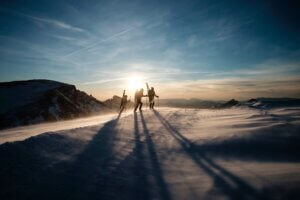Skiing, a multifaceted winter sport and leisure activity conjures images of adventurers gliding elegantly over snowy landscapes. At its core, skiing involves the use of skis, which are long, slender platforms, to traverse snow-covered terrains. This versatile activity transcends mere transportation, evolving into a recreational pursuit and a competitive winter sport recognised by prestigious bodies like the International Olympic Committee and the International Ski Federation.
From serene backcountry trails to the adrenaline-fuelled rush of competitive racing, skiing offers a spectrum of experiences. Its unique blend of athleticism, strategy, and connection with nature makes it a cherished endeavour for winter sports enthusiasts globally. Each glide on the snow is not just a movement but a dance with nature, where the skier and the environment engage in a harmonious and exhilarating ballet.
Skiing’s universal appeal lies in its diversity — from the serene, rhythmic motion of cross-country skiing to the heart-pounding exhilaration of downhill races. It’s an activity that appeals to all ages and abilities, offering varying degrees of challenge and adventure. Whether it’s a leisurely glide through a snowy forest or a high-speed descent down a mountain, skiing promises a unique blend of physical challenge and natural beauty, a true celebration of winter’s wonders.
Tracing the Ancient Trails
Skiing, an activity deeply entrenched in human history, boasts a lineage stretching back nearly five millennia. Its origins, shrouded in the annals of time, are believed to have sprung from the snow-laden regions of Scandinavia and possibly, according to interpretations of ancient artworks, even from the distant landscapes of China. The term ‘ski’, derived from the Old Norse word “skíð”, meaning “split piece of wood or firewood”, encapsulates the rudimentary essence of early skiing equipment.
The evolution of skiing from a pragmatic mode of transportation in snow-clad terrains to a recreational and competitive sport is a tale of ingenuity and adaptation. Ancient skis, discovered across the northern European landscape, bear testament to skiing’s vital role in the daily lives of communities, serving purposes from hunting to mobility in harsh winter conditions. Notably, asymmetrical skis, used in northern Finland and Sweden, highlight the diverse adaptations of this ancient tool.
Skiing’s transformation into a sport is intertwined with its military applications. Historical records depict its use in reconnaissance and warfare, dating back to medieval times in Norway and other parts of Europe. The military’s embrace of skiing undoubtedly influenced its evolution, particularly in the development of techniques and equipment.
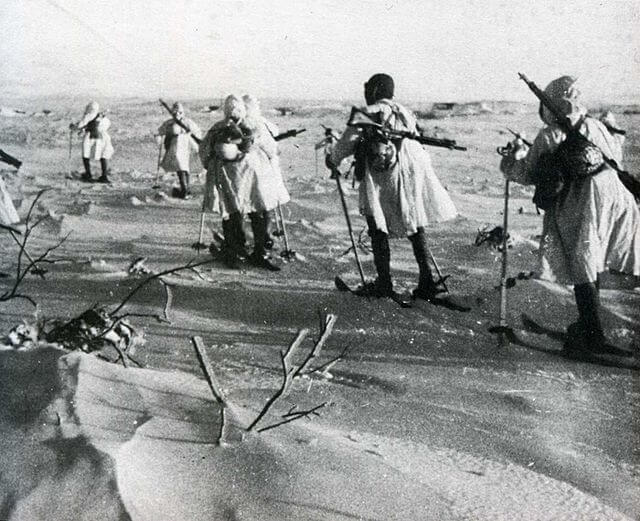
The 19th century marked a pivotal shift, with skiing evolving into a recreational activity and sport. This transition was bolstered by the burgeoning popularity of ski clubs and competitions, laying the groundwork for the rich tapestry of modern skiing culture.
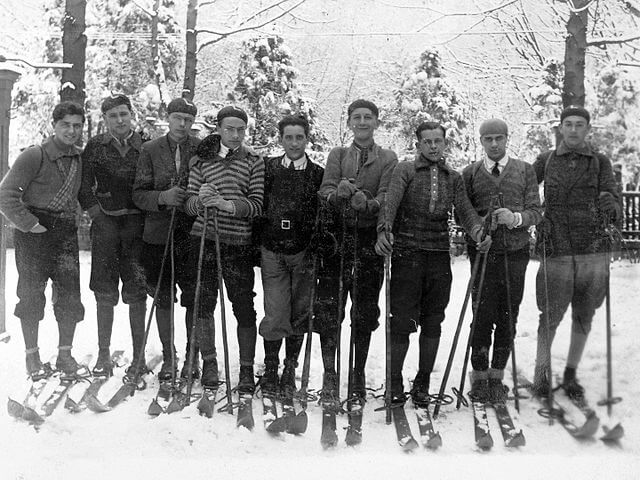
Today, the legacy of skiing, from its ancient roots to its contemporary iterations, continues to captivate and enthral enthusiasts worldwide, offering a unique blend of history, sport, and connection with the natural world.
The Evolution from Utility to Elation
The metamorphosis of skiing from a functional necessity to a source of recreation and competitive zeal paints a vivid narrative of human innovation. In the mid-19th century, this transition began to take shape, notably with the 1843 cross-country skiing race in Tromsø, Norway, heralding skiing’s foray into the realm of sport. This evolution was further amplified in California during the 1860s, where skiing morphed into a competitive endeavour with downhill races on long skis.
A significant catalyst in skiing’s evolution was the pioneering 1888-89 trans-Greenland expedition by Fridtjof Nansen, vividly detailed in his book “The First Crossing of Greenland”. This adventure not only captivated the public’s imagination but also showcased skiing’s potential beyond utilitarian bounds. The subsequent development of Alpine skiing, marked by Nansen’s innovative binding designs around 1860, enabled more dynamic and controlled downhill skiing, laying the foundation for modern skiing techniques and styles.
As the 20th century dawned, skiing increasingly became a symbol of leisure and adventure, drawing enthusiasts to the exhilarating experience of gliding through snowy landscapes. This shift was paralleled by technological advancements, such as the introduction of ski lifts in the 1930s, which revolutionised the skiing experience by enabling more downhill runs and attracting a broader audience to the slopes. The melding of recreation, sport, and innovation thus propelled skiing into a new era, cementing its status as a beloved winter pursuit.
The Varied Terrain of Skiing: A Guide to its Many Forms
Skiing, a multifaceted winter sport, branches into several captivating disciplines, each offering unique experiences.
Alpine Skiing: Known also as downhill skiing, this type is most prevalent in ski resorts. Characterized by fixed-heel bindings, it involves descending slopes with the aid of ski lifts. This genre has given rise to exhilarating variations like backcountry skiing, accessed by helicopter or snowcat, and alpine touring, which combines uphill and downhill travel.
Nordic Skiing: Embracing the disciplines of cross-country skiing and ski jumping, Nordic skiing is defined by toe-only bindings. Cross-country skiing can be enjoyed on groomed trails or untamed backcountry, while ski jumping is reserved for specially designed areas.
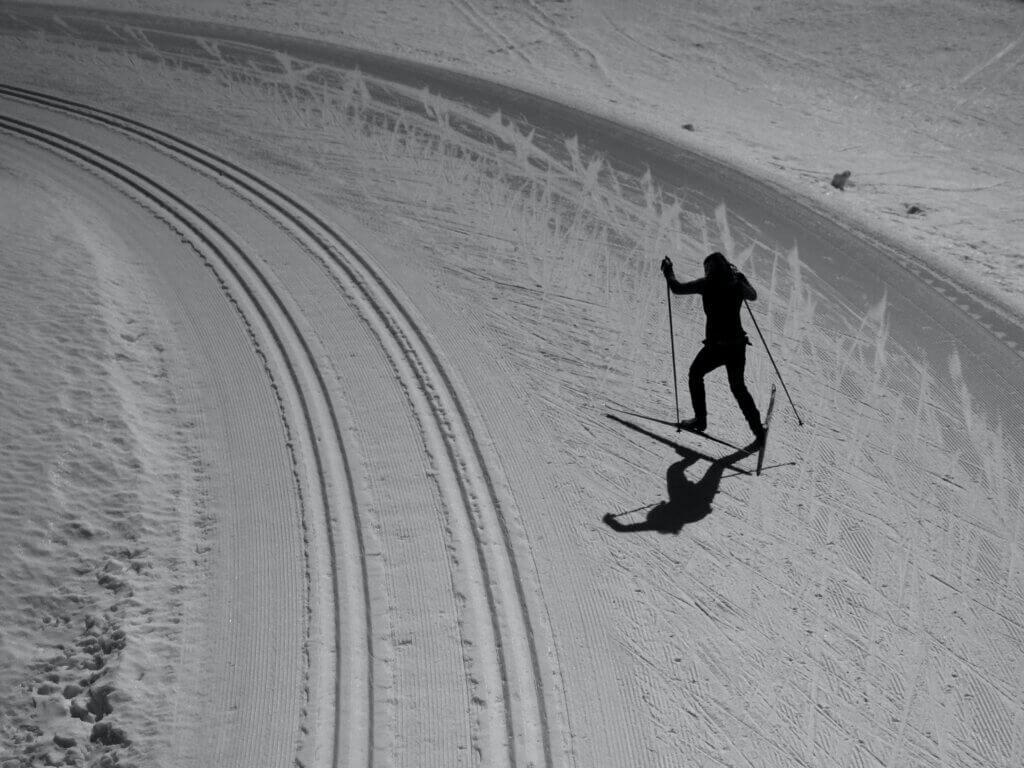
Freestyle Skiing: This genre, initially comprising aerials and moguls, now includes ski cross, half-pipe, and slopestyle. Freeskiing, akin to street skateboarding and BMX, has gained Olympic recognition, embodying the sport’s adventurous spirit.
Telemark Skiing: A blend of Alpine and Nordic skiing, Telemark skiing is named after the Norwegian region. This style uses free-heel bindings and skis similar in width to Alpine skis, offering a unique turning technique.
Each style of skiing presents its distinct flavour, from the serene glide of cross-country to the adrenaline surge of freestyle, capturing the essence of winter’s adventurous spirit.
Gearing Up for the Slopes
The right equipment is paramount in skiing, not only for performance but also for safety. The quintessential gear includes:
- Skis: The foundation of all skiing activities, available in various designs for different types of skiing. Skins or wax may be applied for specific conditions.
- Boots and Bindings: Ensuring a secure connection to the skis, they vary based on skiing style, with distinct differences between Alpine and Nordic skiing.
- Poles: Used for balance and propulsion, especially in Nordic skiing.
- Helmets: Crucial for safety, protecting against injuries.
- Ski Suits, Goggles, and Gloves: These provide protection from the elements and enhance comfort and visibility.
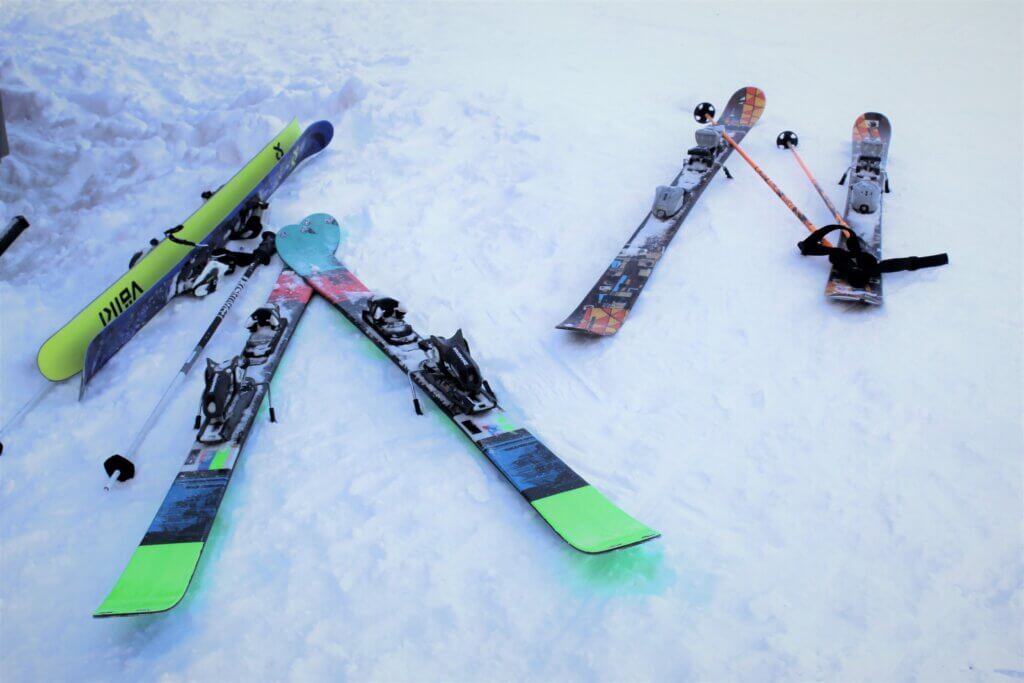
This ensemble of gear not only equips skiers for the challenges of the slopes but also underscores the importance of safety in this exhilarating sport.
Mastering the Mountain: The Art of Skiing Techniques and Styles
The evolution of skiing has brought forth a rich tapestry of techniques and styles, each adapted to the challenges of the slopes. Early methods like the Telemark turn and the stem Christie have evolved with ski technology and geometry. The development of parabolic ski designs facilitated modern techniques such as the carve turn, offering greater control and agility.
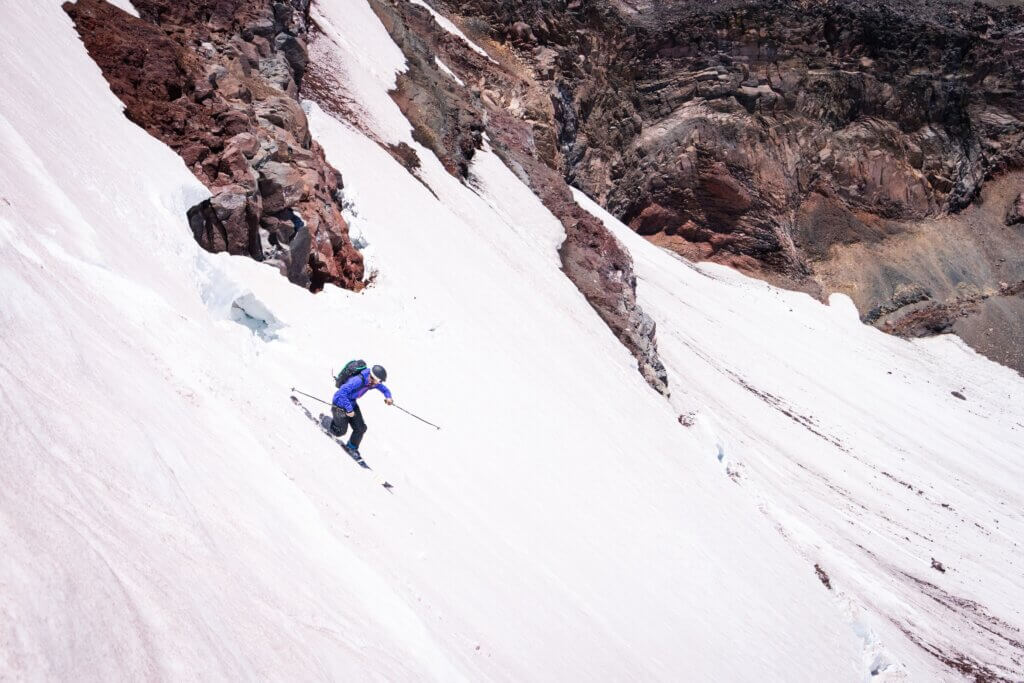
Each style, from the precision of slalom turns to the fluid motion of cross-country skiing, reflects a unique dialogue between skier and snow, demanding skill, balance, and an intimate understanding of the mountain terrain. This diversity in techniques not only enhances the skiing experience but also allows skiers to express their individuality and passion for the sport.
The Competitive Edge: A World of Skiing Competitions and Events
Skiing competitions showcase the pinnacle of skill and endurance. They encompass various formats, from the adrenaline-packed Alpine skiing events like downhill and slalom to the endurance-testing cross-country races. Prominent among these are the FIS World Cups and World Championships, held for different skiing disciplines.
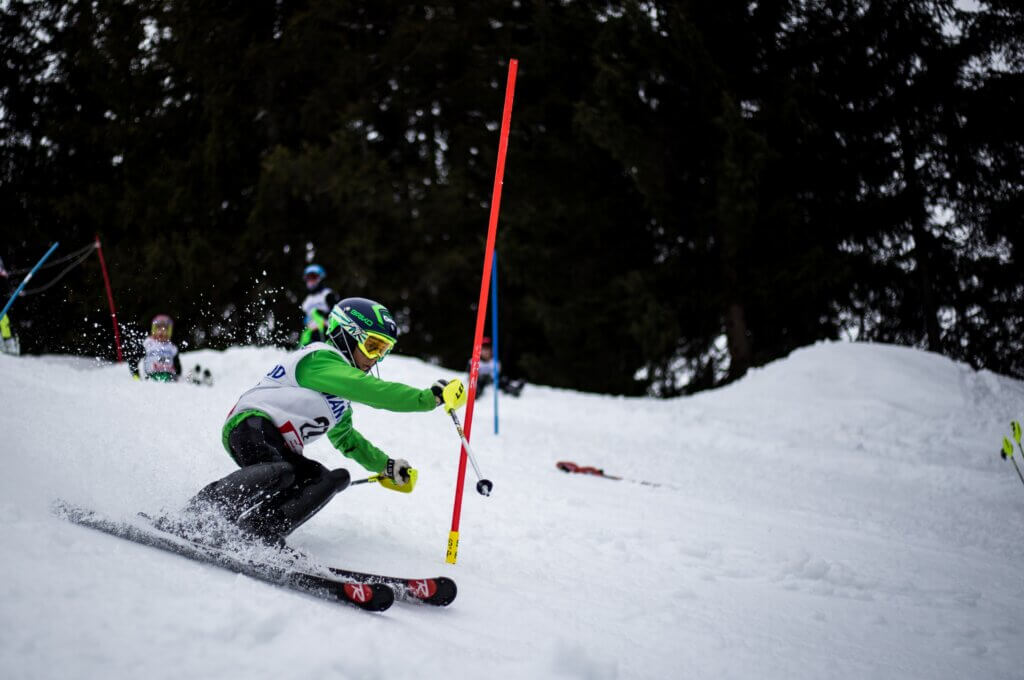
The Winter Olympics, since its inception in 1924, has been a grand stage for skiing, featuring events across all major disciplines, including the newer additions of freestyle and snowboarding. These competitions not only celebrate the best in skiing but also inspire a global audience, bringing together a community united by a love for this exhilarating sport.
Skiing’s Global Tapestry: From Mountains to Mainstream
Skiing’s journey from mountainous regions to global acclaim is a story of cultural exchange and technological advancements. Initially rooted in Europe and North America, the allure of skiing has spread across continents, finding enthusiasts in diverse locales like the Andes, East Asia, and even the Atlas Mountains of Africa. This expansion was greatly aided by advancements such as ski lifts and snowmaking machines, making the sport more accessible.
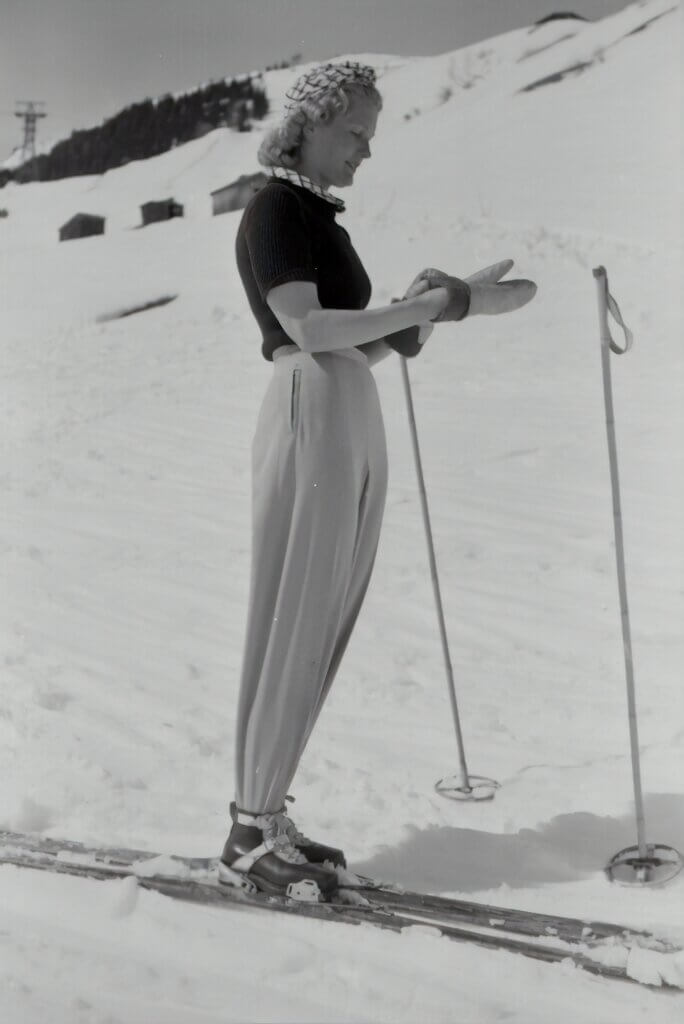
The advent of television coverage in the 1950s further propelled skiing into the limelight, creating a worldwide community of skiing enthusiasts and transforming it into a symbol of adventure and exploration.
Beyond Traditional Slopes: Exploring Alternative Skiing Forms
Skiing has evolved to embrace a myriad of forms beyond traditional snow-covered slopes. This includes “dry” skiing on synthetic surfaces, offering enthusiasts a year-round opportunity to practice their skills. Sand and grass skiing provide unique challenges and experiences, diversifying the sport’s appeal.
Additionally, indoor skiing facilities and ski simulators have emerged, making skiing accessible in regions devoid of natural snow. These alternative forms not only extend skiing’s reach to a broader audience but also add exciting dimensions to this versatile sport.
Embracing Winter’s Gift: The Ongoing Journey of Skiing
In conclusion, skiing stands as a testament to human creativity and our enduring bond with nature. From ancient means of survival to a celebrated global sport, skiing has journeyed across centuries, continually evolving and adapting. It captures the essence of winter’s majesty, offering a unique blend of adventure, competition, and leisure.
As technology advances and cultural exchanges flourish, skiing promises to continue its dynamic evolution, inviting future generations to explore and cherish the snowy landscapes of our world. This ongoing journey of skiing is not just about mastering the slopes but also about embracing the spirit of winter in all its forms.

